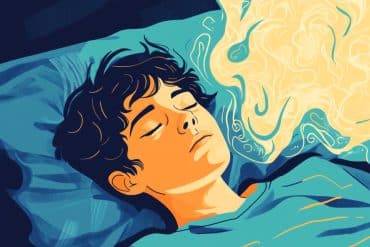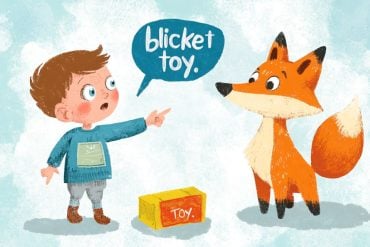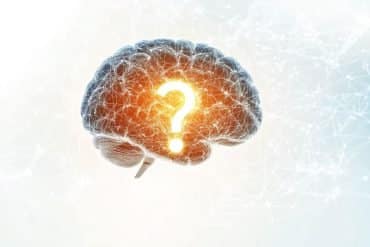Summary: Findings could help to develop new neuro-rehabilitation interventions through musical training.
Source: Baycrest Center for Geriatric Care.
A recent study conducted at Baycrest Health Sciences has uncovered a crucial piece into why playing a musical instrument can help older adults retain their listening skills and ward off age-related cognitive declines. This finding could lead to the development of brain rehabilitation interventions through musical training.
The study, published in the Journal of Neuroscience on May 24, found that learning to play a sound on a musical instrument alters the brain waves in a way that improves a person’s listening and hearing skills over a short time frame. This change in brain activity demonstrates the brain’s ability to rewire itself and compensate for injuries or diseases that may hamper a person’s capacity to perform tasks.
“Music has been known to have beneficial effects on the brain, but there has been limited understanding into what about music makes a difference,” says Dr. Bernhard Ross, senior scientist at Baycrest’s Rotman Research Institute (RRI) and senior author on the study. “This is the first study demonstrating that learning the fine movement needed to reproduce a sound on an instrument changes the brain’s perception of sound in a way that is not seen when listening to music.”
This finding supports Dr. Ross’ research using musical training to help stroke survivors rehabilitate motor movement in their upper bodies. Baycrest scientists have a history of breakthroughs into how a person’s musical background impacts the listening abilities and cognitive function as they age and they continue to explore how brain changes during aging impact hearing.
The study involved 32 young, healthy adults who had normal hearing and no history of neurological or psychiatric disorders. The brain waves of participants were first recorded while they listened to bell-like sounds from a Tibetan singing bowl (a small bell struck with a wooden mallet to create sounds). After listening to the recording, half of the participants were provided the Tibetan singing bowl and asked to recreate the same sounds and rhythm by striking it and the other half recreated the sound by pressing a key on a computer keypad.
“It has been hypothesized that the act of playing music requires many brain systems to work together, such as the hearing, motor and perception systems,” says Dr. Ross, who is also a medical biophysics professor at the University of Toronto. “This study was the first time we saw direct changes in the brain after one session, demonstrating that the action of creating music leads to a strong change in brain activity.”
The study’s next steps involve analyzing recovery between stroke patients with musical training compared to physiotherapy and the impact of musical training on the brains of older adults.

With additional funding, the study could explore developing musical training rehabilitation programs for other conditions that impact motor function, such as traumatic brain injury.
Research for this study was conducted with support from the Canadian Institutes of Health Research, which supported research staff and equipment.
Dr. Ross’ work is setting the foundation to develop hearing aids of the future and cognitive training programs to maintain hearing health.
Funding: Funding was provided by Canadian Institutes of Health Research.
Source: Jonathan MacIndoe – Baycrest Center for Geriatric Care
Image Source: NeuroscienceNews.com image is credited to Baycrest Health Sciences.
Original Research: Abstract for “Sound-making actions lead to immediate plastic changes of neuromagnetic evoked responses and induced beta-band oscillations during perception” by Bernhard Ross, Masihullah Barat and Takako Fujioka in Journal of Neuroscience. Published online May 242017 doi:10.1523/JNEUROSCI.3613-16.2017
[cbtabs][cbtab title=”MLA”]Baycrest Center for Geriatric Care “Why Playing a Musical Instrument Can Protect Brain Health.” NeuroscienceNews. NeuroscienceNews, 2 June 2017.
<https://neurosciencenews.com/musical-instrument-brain-health-6822/>.[/cbtab][cbtab title=”APA”]Baycrest Center for Geriatric Care (2017, June 2). Why Playing a Musical Instrument Can Protect Brain Health. NeuroscienceNew. Retrieved June 2, 2017 from https://neurosciencenews.com/musical-instrument-brain-health-6822/[/cbtab][cbtab title=”Chicago”]Baycrest Center for Geriatric Care “Why Playing a Musical Instrument Can Protect Brain Health.” https://neurosciencenews.com/musical-instrument-brain-health-6822/ (accessed June 2, 2017).[/cbtab][/cbtabs]
Abstract
Sound-making actions lead to immediate plastic changes of neuromagnetic evoked responses and induced beta-band oscillations during perception
Auditory and sensorimotor brain areas interact during the action-perception cycle of sound making. Neurophysiological evidence of a feedforward model of the action and its outcome has been associated with attenuation of the N1 wave of auditory evoked responses elicited by self-generated sounds, such as vocalization or playing a musical instrument. Moreover, neural oscillations at beta-band frequencies have been related to predicting the sound outcome after action initiation. We hypothesized that a newly learned action-perception association would immediately modify interpretation of the sound during subsequent listening. Nineteen healthy young adults (seven female, twelve male) participated in three magnetoencephalography (MEG) recordings while first passively listening to recorded sounds of a bell ringing, then actively playing the bell with a mallet, and then again listening to recorded sounds. Auditory cortex activity showed characteristic P1-N1-P2 waves. The N1 was attenuated during sound making, while P2 responses were unchanged. In contrast, P2 became larger when listening after sound making compared to the initial naïve listening. The P2 increase occurred immediately, while in previous learning-by-listening studies P2 increases occurred on a later day. Also, reactivity of beta-band oscillations as well as theta coherence between auditory and sensorimotor cortices was stronger in the second listening block. These changes were significantly larger than those observed in control participants (eight female, five male), who triggered recorded sounds by a keypress. We propose that P2 characterizes familiarity with sound objects, whereas beta-band oscillation signifies involvement of the action-perception cycle, and both measures objectively indicate functional neuroplasticity in auditory perceptual learning.
SIGNIFICANCE STATEMENT
While suppression of auditory responses to self-generated sounds is well-known, it is not clear whether the learned action-sound association modifies subsequent perception. Our study demonstrated the immediate effects of sound-making experience on perception using MEG recordings, as reflected in the increased auditory evoked P2 wave, increased responsiveness of beta oscillations, and enhanced connectivity between auditory and sensorimotor cortices. The importance of motor learning was underscored as the changes were much smaller in a control group who used a keypress to generate the sounds instead of learning to play the musical instrument. The results support the rapid integration of a feedforward model during perception and provide a neurophysiological basis for the application of music making in motor rehabilitation training.
“Sound-making actions lead to immediate plastic changes of neuromagnetic evoked responses and induced beta-band oscillations during perception” by Bernhard Ross, Masihullah Barat and Takako Fujioka in Journal of Neuroscience. Published online May 242017 doi:10.1523/JNEUROSCI.3613-16.2017






